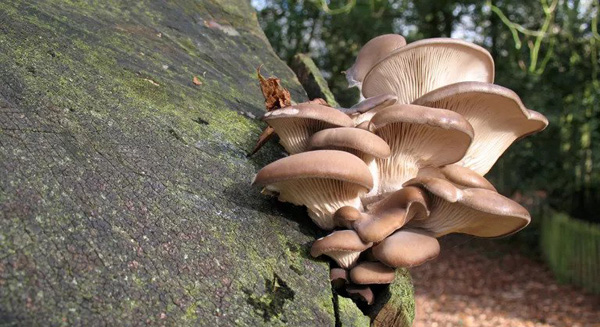
Mushroom That Eats Plastic May Help in Fight Against Plastic Waste
Pestalotiopsis microspora can turn polyurethane into organic material, naturally
Humans have made about 9 billion tons of plastic since the 1950s, only 9% of which has been recycled and 12% incinerated. The remaining 79% has accumulated in landfills or the natural environment, and even most plastics labeled "biodegradable" don't break down in the ocean. To help lighten nature's load in the midst of this environmental crisis, researchers are now looking at alternative methods for plastic reduction. One such solution comes in the form of a certain mushroom species with the ability to consume polyurethane, one of the main ingredients in plastic products. What does that mean for environmental efforts? If we can find a way to harness the power of these plastic-eating mushrooms, some scientists believe that these natural composters could be the key to cleaning up our planet. Species of Plastic-Eating Mushrooms Mushrooms, which technically refer to the fruiting body (or the reproductive structure) of some underground or underwood fungi, are known for their natural process of breaking down dead plants. From construction material to biofuel, the hidden potential of fungi has been keeping researchers on their toes for years. And with anywhere from 2 million to 4 million fungi species out there, the possibilities are seemingly endless. Scientists have discovered a few mushrooms that eat plastic over the years, and while some are incredibly rare, others can be found in your local market. Students on a class research trip from Yale discovered a rare mushroom in the Amazon rainforest in Ecuador back in 2011. The fungus, Pestalotiopsis microspora, can grow on polyurethane, the main polymer in most plastic products, and use it as its sole carbon source. According to the Yale research team, the plain-looking light brown mushroom can live in environments with or without oxygen, breaking down and digesting polyurethane before turning it into organic matter. In an experiment measuring the rate at which the fungus decomposes matter, they noticed significant clearance in the plastic material after just two weeks. Pestalotiopsis microspora even cleared the plastic faster than Aspergillus niger, the fungus known for causing damaging black mold. In a collaboration between designer LIVIN Studio and the microbiology faculty at Utrecht University in the Netherlands, a project using the mycelium (the vegetative part of the mushroom similar to a plant's root system) of two common mushrooms made headlines in 2014. Using Pleurotus ostreatus, also known as the oyster mushroom, and Schizophyllum commune, aka the split gill mushroom, the team was able to turn plastic into human-grade food. The mushrooms were cultivated on circular pods made of seaweed-derived gelatin filled with UV-treated plastics. As the fungus digests the plastic, it grows around the edible base pods to create a mycelium-rich snack after just a few months. While the design, known as Fungi Mutarium, was just a conceptual prototype to support research, it presented the potential of commonly eaten mushrooms as a solution to plastic pollution. In 2017, a team of scientists discovered another mushroom that eats plastic in a general city waste disposal site in Pakistan. The fungus, called Aspergillus tubingensis, could break down polyester polyurethane into smaller pieces after two months. What Is Mycoremediation Mycoremediation is the natural process that fungi use to degrade or isolate contaminants in the environment. It is a form of bioremediation, which can be either naturally occurring or introduced deliberately, to break down different types of environmental pollutants. Mycoremediation uses fungi instead of bacteria (though it is sometimes used in combination), thanks to the enzymes that mushrooms produce naturally. This unique mushroom feature has been shown to be an efficient tool in waste remediation. For example, a 2020 study published in Biotechnology Reports found that mycoremediation applied to agricultural wastes like pesticides, herbicides, and cyanotoxins is more cost-effective, eco-friendly, and effective. This is especially relevant in the case of Pestalotiopsis microspora, which not only lives on plastic alone but can do so in dark environments without oxygen. That means it can thrive in waste treatment centers, have applications in home composting systems, and even survive at the bottom of heavy landfills. And You Can Eat It, Too! Although the Yale study on P. microspora didn't examine the edible qualities of the plastic-degrading fungi, the Utrecht University project definitely proves that certain types of mushrooms remain edible even after consuming plastic. The resulting mushrooms tasted "sweet with the smell of anise or liquorice," while the texture and flavor depended on the specific strain. The team even came up with a recipe to flavor the seaweed-gelatin base pod and designed a range of specialized cutlery for eating the mushrooms. According to a study by the University of Rajasthan in India, plastic-eating mushrooms can sometimes absorb too much of the pollutant in their mycelium, and therefore cannot be consumed due to a large amount of toxins.5 If more research is performed regarding the safety aspects, however, mycoremediation through mushroom cultivation could perhaps address two of the world's greatest problems: waste and food scarcity. Pros and Cons The idea of using mushrooms to break down plastics isn't without its limitations. Releasing new organisms into new environments (for example, in the ocean, which is home to hundreds of thousands of metric tons worth of plastic) can be tricky business. One approach, as Newsweek reported after the Yale team's discovery of P. microspora in the Amazon, would be to collect the plastic debris first and let the fungus work its magic in a controlled environment. That being said, research clearly shows that these types of mushrooms can break down plastics in weeks or months, potentially producing a protein-rich food for animals, humans, or plants. With more research, mushrooms could help address our plastic pollution problems.
